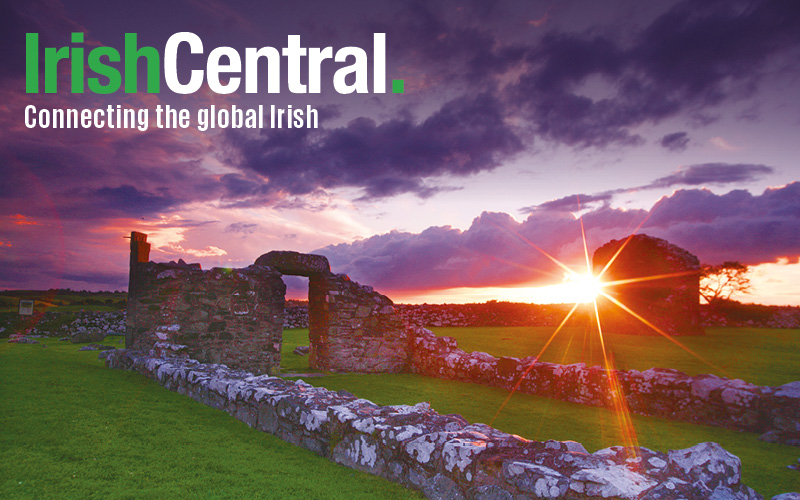Did you know that by 1850, one in five New Orleans residents was from Ireland? It had a larger Irish population per capita than Philadelphia and Baltimore, and was on par with Boston.
Did you know that Louisiana’s second governor under Spanish rule was an Irishman named Alejandro O’Reilly?
How about the fact that the Crescent City first celebrated St. Patrick’s Day in 1806? That there’s an area known as the Irish Channel? Or that an entire museum dedicated to the city’s Irish cultural history was opened by then-Tanaiste Eamon Gilmore on St. Patrick’s Day 2013?
New Orleans has a rich Irish story to tell, from the first wave of largely middle class Irish immigrants in the 1700s, to more wide-spread immigration in the 1820s and 30s and in the wake of the Irish Famine, to the vibrant Irish community today.
In the Crescent City, the Irish started the Hibernia Bank and formed local groups, including the Ancient Order of Hibernians. They built churches and opened schools. They dug canals, laid railroads and helped form the city’s first proto-union. They left an indelible mark on the already famously unique local cuisine. The Irish of New Orleans were also notably charitable, founding orphanages and donating funds to causes both local and Irish.
That charity was never forgotten, and in 2005 Ireland donated $1 million to New Orleans in the wake of Hurricane Katrina. The Irish Consulate of Atlanta donated $50,000 in grants to repair the ruined libraries of Catholic schools in the New Orleans diocese.
In recognition of this strong, but largely unheralded relationship, last fall the Irish government selected New Orleans to host the 2014 Irish Famine Commemoration.
Launched in 2009, the annual event aims to keep the memory of An Gorta Mor, Ireland’s Great Hunger, alive while also paying tribute to the outstanding accomplishments of the Irish men and women who left their homeland to escape certain death by starvation and illness, bravely starting new lives abroad and laying the foundations for the now 70 million-strong Irish diaspora. Previous host cities include Toronto, New York, Liverpool, Boston and Sydney.
The Irish Famine Commemoration, which will run from November 6 – 9, is being organized by a board containing a cross-section of prominent figures from Louisiana's Irish community and Irish Consul General to Atlanta Paul Gleeson. Events include:
- A symposium hosted by Tulane University which will explore the relationship between Ireland and New Orleans from the famine days through to Hurricane Katrina.
- Ceilis, festivities and performances from local Irish groups.
- The opening of a Great Hunger exhibition at the New Orleans Irish Cultural Museum.
- A historical tour of Irish New Orleans.
- Fundraising events for global famine and disaster relief.
- The first-ever casual dress Irish dance competition in New Orleans.
- Samplings of local cuisine and demonstrations by some of New Orleans’ culinary stars including the famous Brennan restaurateur family.
- A gala hosted by the Irish Network New Orleans (500 members and growing since its founding three years ago) and featuring the penultimate performance of Black 47.
- The dedication of a new Hibernian Memorial Park at the historic New Basin Canal to honor the thousands of Irish laborers who toiled and, in many cases, lost their lives building the canal.
Irish government ministers and diplomats will be traveling to New Orleans for the commemoration events, as will many of the brightest minds in scholarly research and commemoration of the Great Hunger, including Christine Kinealy of Quinnipiac University’s Ireland’s Great Hunger Institute and Caroilin Callery, director of Strokestown Park and the National Famine Museum in Roscommon.
Professor Laura D. Kelley of Tulane University will deliver the symposium’s opening lecture. Her book, “The Irish in New Orleans,” will be released later this month and Kelley told IrishCentral that the foremost goal is to “reinforce the relevance of the Great Famine to contemporary issues.
“The Great Famine isn’t some event that happened long ago in a country far away to be relegated to a few pages in history books,” she explained. “Hunger still exists – but not just in distant places like the African continent, but also on the streets in the United States and Europe.
“Moreover, we want to emphasize the critical role of public policy and private charity in ameliorating or exacerbating catastrophes. New Orleans, like Ireland, is no stranger to horrific tragedies. Hurricane Katrina demonstrated to the residents of New Orleans the full extent to which people throughout the world will mobilize to provide money, food and clothing at times of dire need.”
Beyond this, she said, the aim is to draw attention to the enduring links between Ireland and New Orleans. “From the Famine to Katrina, these two locales have been inextricably linked through their mutual assistance to each other.”
Kelley, an immigration and ethnic historian who is also the academic director of Tulane’s Summer in Dublin program, believes there is just as much reason to call New Orleans an Irish city as there is to call it a French, Spanish or Creole one.
“From dance to music, sports to politics there isn’t one area that the Irish did not impact,” she said.
“The Irish and New Orleans have been together since the very beginning in 1718. In the eighteenth century, the city was home to Irish adventurer/soldiers and bold entrepreneurs who laid down the foundation of the city’s wealth and power. In the nineteenth century, the Great Famine brought thousands of immigrants to the Crescent City. Here, they were welcomed by the local Irish population and the Catholic Church and thrived in the booming port economy of the city.
“It was the Great Hunger that shaped the Irish identity of New Orleans,” she added, which makes New Orleans’ turn to host the Irish Famine Commemoration all the more important.
For more information, visit ifnola2014.org




Comments